Home Repairs
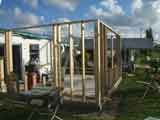
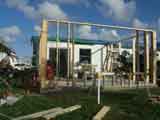
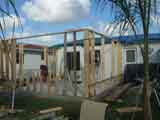
Unfortunately I did not get photos of the foundation work so I am showing work starting with the framing. We start with basic 2 X 6 framing following the engineers' building plans.
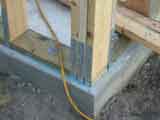
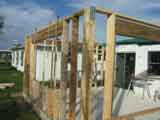
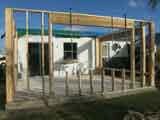
Every stud has hurricane straps on the top and bottom. There are J-bolts between each stud, which connects the foundation to the frame. The headers were extremely heavy and took three of us to get them into position.
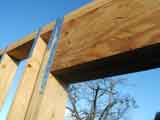
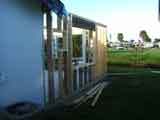
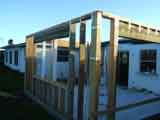
This is a close up of the finished header. It always felt like there should be two jack studs on each end of this 12' header, but the engineer only called for one. Guess that's why I'm a computer engineer.
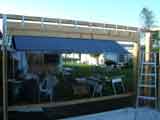
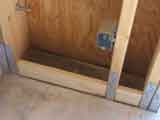
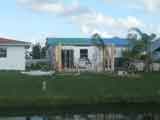
I put strips of wood between the studs so I had something to nail into when it came time to do baseboards. Note the size of those queen palms I bought for $25 a piece. Check out how big they got in the last photos. That is less than 2 years growth. Thanks palm fertilizer.
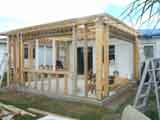
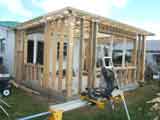
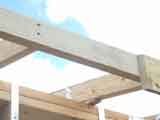
The roof truss was fairly straightforward. Just follow the roof truss plans; every truss was clearly marked for proper location. Biggest problem was getting the first few started without them falling over.
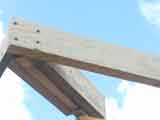
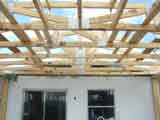
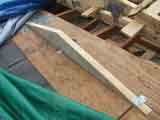
One of the hip trusses did not quite reach the corner so I added 2 X 4 material on each side and screwed it all together.
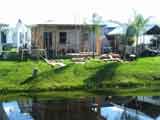
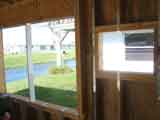
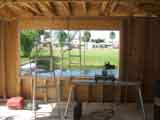
With the sheathing on it is starting to look like a real structure.
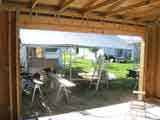
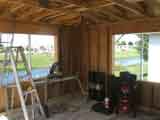
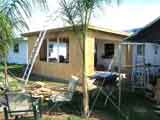
I did make a big mistake with the roof truss ties that can be seen in the first photo. I put them low so I could properly nail them to the header. But, if you look closely you see they are too low and there would be difficulty putting up the drywall in the corner. The many inspectors nor I ever caught the mistake until it was time to drywall the interior. It was fixable of course just a major pain in the ass.
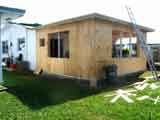
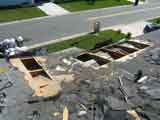
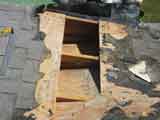
This was the start of the roofing. I had help from the family to remove the shingles. The garbage men really hated me this month. Everything on the roof was bagged. There had to be well over 150 bags that went to the curb over the following month.

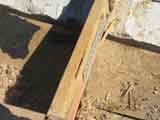
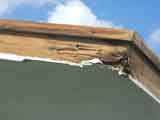
This was a very bad start to the roofing process. Termites! It did not help that there was a few trees butt up against the house. The termites got into the fascia board and started a feast on the roof truss. So what should have been a simple roof sheathing fix turned into a major ordeal that almost lead to tenting the house.
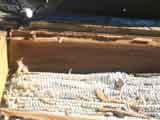

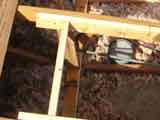
I decided that a spot treatment might work well here since my father had it done once before in the patio area; The area that was lost during the storm.I learned in later years that tenting a house is useless unless they do a spot treatment as well because the gas they use will not kill the termite eggs left behind. I checked the adjoining trusses in the back of the house and it looked as if the termites never spread. I bought termite foam to shoot into the crevasses of the effected wood. I also bought a potent liquid to spray on the outside of the wood. I coated the truss many times from the ridge to the eve. I then replaced any wood I thought might compromise the integrity of the roof.
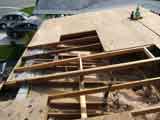
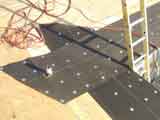
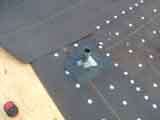
The plumbing vent had to be repaired as well. It snapped off when the patio roof hit the front of the house. A simple rubber coupling with two clamps did the trick. The first photo shows all the repairs to the termite-infested area. When all the sheathing looked good, I started laying the 30# felt. Finally, a weather resistant roof and no more blue tarps.
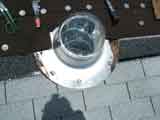
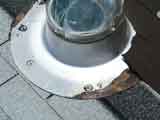
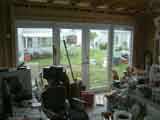
One of the best purchases was this tubular skylight by ODL. This light goes to a half bath below, which has no window. Ever since the skylight was installed I have never used the lights in this room during the day. I would guess that it has already paid for itself. I originally wanted dimensional shingles, but at this stage of construction I was running low on funds and had to compromise on standard asphalt shingles. I would have absolutely loved to install a metal roof, but the building department will only allow homeowners to do shake and shingle roofs.
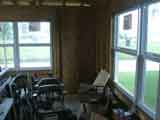
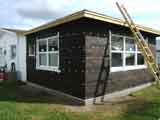
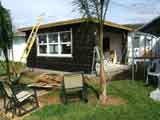
The windows and doors are impact resistant.
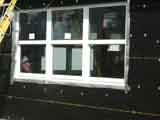
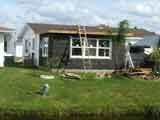

The queen palms have been in the ground less than 6 months and they are already doubled in trunk thickness.

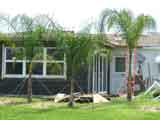
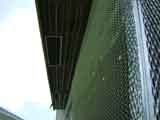
A look at the lathe before the scratch coat goes up.

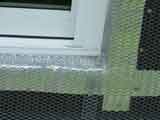
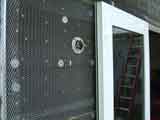
I taped up around the A/C unit before any mortar goes up.
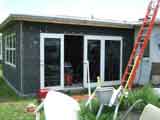
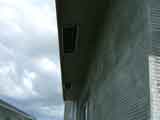
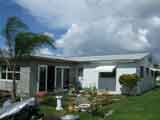
The scratch coat was by far the easiest coat to apply. I'm not to experienced when floating the surface smooth. I can do an adequate job, but to get it perfect I need more practice.

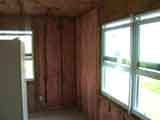
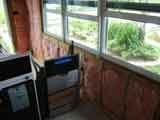
The insulation marked the first time I saw light at the end of the tunnel. There is something about seeing the walls filled in that give it a finished look. The walls take R19 and the ceiling take R30.
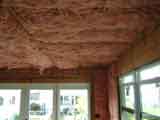
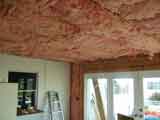
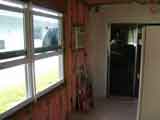
The hardest part of insulating was trying to keep the batts from falling down. Normally the paper gets stapled to the joists, but since the paper has to face out it is difficult to staple the pink stuff.
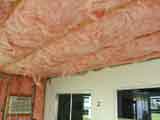
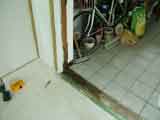
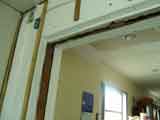
I finally got the chance to open up the room and remove the sliding glass door and window. What a difference! Notice the blue electrical box near the furring strips. I plan to install surround sound in the future. Now is the time to consider such things before the wall goes up.
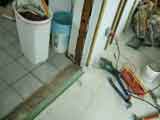
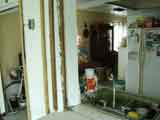
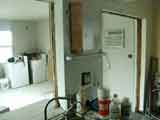
Both electrical boxes sharing the old exterior wall require extensions to bring the box to the new surface height.
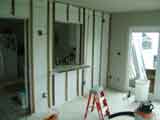
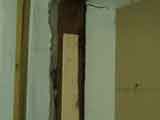
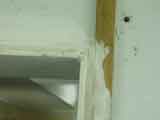
I had to shim the old window and door buck so the drywall would clear the old mortar. The edges of the drywall were filled in with joint compound to avoid deflection on the corners.
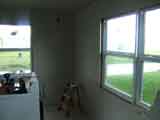
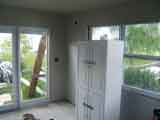
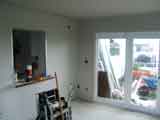
Those 12' pieces of drywall on the ceiling were tricky to install with only 2 people. My cousin did a good job helping me that day, although he did break one of the panels.
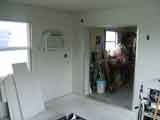
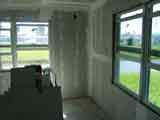
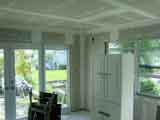
Ready for the first coat of mud.
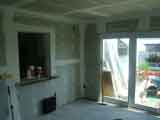
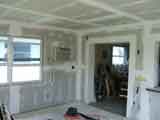
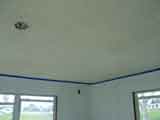
Third coat of mud is done; Primer and popcorn ceiling comes next.
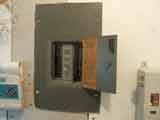
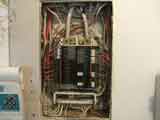
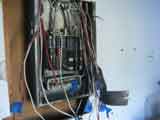
Time to upgrade the electrical panel. These old Federal Pacific breakers are a poor design. My mother's house down the street, which was built by the same builder, has Square D breakers. They work just as good as the day they were installed, which was a few years prior to this house being built. All the wires were marked before being removed.

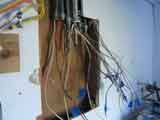
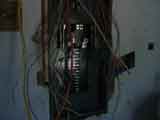
Before the breakers can be installed, their placement has to be taken into consideration so that both buses are equalized. Ideally one would like to have a current draw as equal as possible on both sides of the panel during all operating regimes.
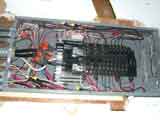
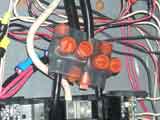
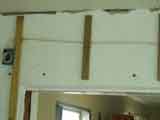
Notice the difference in wire size from the original feed lines to the spliced wire feeding the panel. The wires are going from aluminum to copper, therefore dielectric grease is used inside the Polaris double-tap connectors. I wired the room for a future surround sound system.
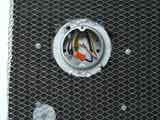
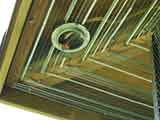
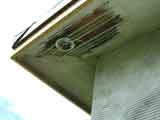
These rings on these exterior boxes are required by code. I left the lathe unfinished on the soffit because the electrical inspection was not done yet. I wanted to be absolutely sure it passed before I covered it up.
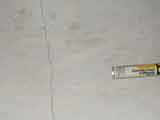
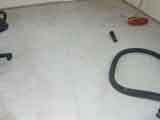
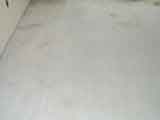
There were small cracks in the center of the slab that I sealed before I tiled the room. The cracks did not migrate to the edges of the slab so I was not overly concerned by their appearance.
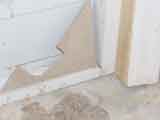
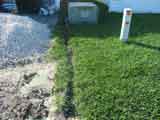
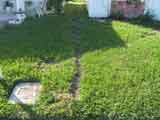
This tile was a particularly tough cut. It is hard to get this close to the edge without breaking the tile especially when it is ceramic and not porcelain. I recommend taking pictures of your irrigation trenches for future reference.
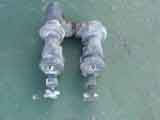
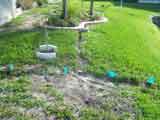
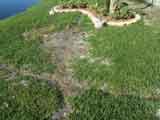
Here were the valves for the original irrigation system. It was a 2 zone system running off the city water; very expensive during drought. The last two photos show a trench I made prior to planting the palm trees. I laid a pvc pipe and caped the ends before planting the trees. It would have been a daunting task to dig a trench after the palm root system took shape.
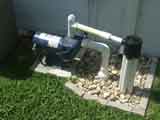
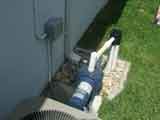
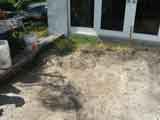
I had to put a second one-way valve near the canal because the valve near the pump allowed the pipe to keep losing its prime. I chose to spend the extra money and get a Sta-Rite pump. I heard those HD and Lowes pumps are worthless. My uncle has had his for 15 years without any problems. I also spent a little extra for the Hunter pump relay. The last photo shows how much digging I had to do for the patio area.
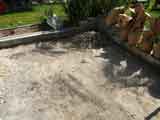
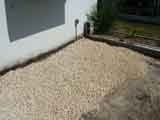
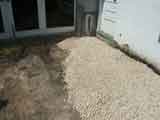
I dug enough soil out to accommodate 5" of 57-rock gravel and 1" of course sand plus the height of the pavers.
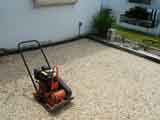
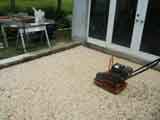
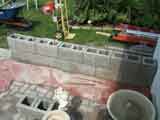
I compacted the stone before sand went down. The wall has rebar and concrete filling the cavities.
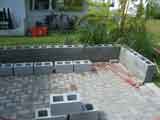
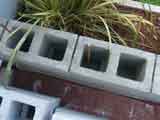
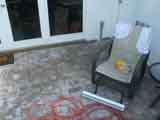
It is great to be able to step out onto a solid patio instead of dirt and grass.



Finally done. I had to build a little shed to accommodate the storm shutters and ladders. Now if I can only figure out how to get the cat from climbing the shed to get on the roof. Someone told me to get foxtail instead of queen palms because they are lower maintenance. I'll probably regret it when I'm 60 hanging onto a ladder trying to cut the fronds, but for now I'll enjoy!